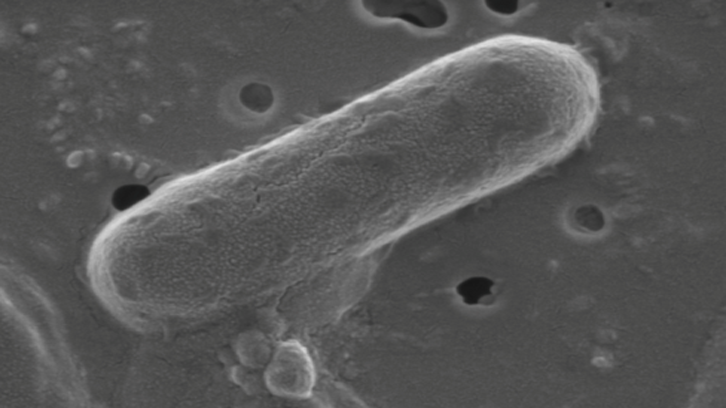Thalassocella blandensis: a new marine bacterium discovered

A group of researchers from the UAB Department of Genetics and Microbiology, in collaboration with other Spanish institutions, has characterized a new marine bacterium which constitutes a new genus and new species of the Cellvibrionaceae family. Its morphology, its way of life and its low genetic similarity with other organisms of the same family make it a candidate to be incorporated into the list of new discoveries in the field of microbiology.
The description of the living beings with which we share the Earth is a pressing task in a context of global change and mass extinctions. In the case of animals and plants we have a rough idea of the total number of species, but with microorganisms our ignorance is huge. Some estimates state that we live with 1012 species of microorganisms and only a few thousand have been described. Thus, moving forward to the description of microbial species is an essential step in the right direction.
Researchers from the Department of Genetics and Microbiology from the Universitat Autònoma de Barcelona (UAB), the Institute of Marine Sciences (ICM-CSIC), the National Center for Biotechnology (CNB-CSIC) and the Spanish Type Culture Collection (CECT) - Universitat de València, have characterized a new microorganism that represents a novel genus and a new species of the family Cellvibrionaceae, within the class Gammaproteobacteria. This bacterium was isolated from surface seawater from the Blanes Bay, in the Mediterranean Sea, and for this reason the name Thalassocella blandensis was proposed (Thalassocella: a cell of the sea, blandensis: belonging to Blande or Blanda, the name that the Romans used for the city of Blanes).
Members of the family Cellvibrionaceae live in marine environments and possess the ability to degrade a wide variety of polysaccharide compounds, such as cellulose, agar, starch, and chitin, among others. Some of its species establish symbiotic relationships with mollusks or algae, or have been isolated from coastal seawater or sediments. T. blandensis specifically is a Gram-negative, bacillus-shaped and mobile bacterium, due to the presence of a single flagellum at one end of the cell. It is strictly aerobic and chemoorganoheterotrophic (means that it utilizes organic compounds to grow). It is able to use cellulose as the sole carbon and energy sources, but it can also utilize various carbohydrates, organic acids, and aminoacids. It is a mesophilic bacterium (grows at intermediate temperatures), neutrophilic (requires neutral pH) and moderately halophilic, with an absolute requirement of sodium and magnesium for its growth.
Sequencing of T. blandensis genome showed it to be 6,085,336 base pairs in size and confirmed the presence of a wide variety of genes with a high potential for polysaccharide degradation, as exhibited by other members of the family Cellvibrionaceae, such as Agarilytica rhodophyticola, Teredinibacter turnerae, Saccharophagus degrans or Agaribacterium haliotis, which make up the same clade together with T. blandensis. However, the low genetic and phenotypic similarity of the microorganism with other species belonging to this group indicate that T. blandensis represents a novel genus and a new species within the family.
Department of Genetics and Microbiology, Biosciences' Faculty, Universitat Autònoma de Barcelona.
References
Teresa Lucena, David R. Arahal, Isabel Sanz-Sáez, Silvia G. Acinas, Olga Sánchez, Rosa Aznar, Carlos Pedrós-Alió, María J. Pujalte. Thalassocella blandensis gen. nov., sp. nov. A novel member of the family Cellvibrionaceae. International Journal of Systematic and Evolutionary Microbiology (2020) 70, 1231-1239. https://doi.org/10.1099/ijsem.0.003906

